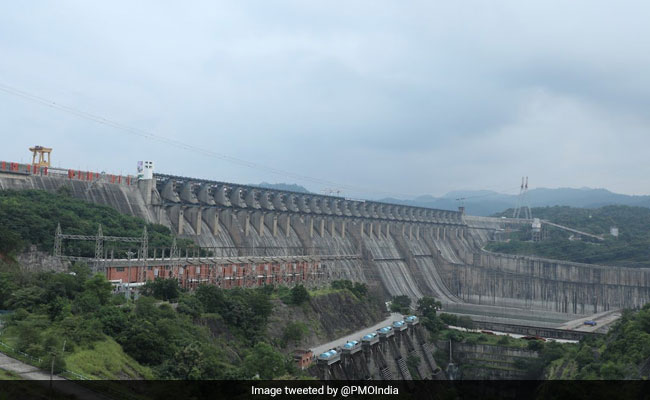
Prime Minister Narendra Modi today inaugurated the Sardar Sarovar Dam in Gujarat on his 67th birthday. Addressing a public meeting after the event, PM Modi called the dam an engineering marvel. "A massive misinformation campaign was launched against the dam project, which is an engineering miracle," he said. The foundation stone was laid by Pandit Jawaharlal Nehru nearly six decades ago, on April 5, 1961. But, the construction began only in 1987. The Prime Minister said the Sardar Sarovar Dam will become a symbol of India's new and emerging power. It is the second biggest dam in the world after the Grand Coulee Dam in the United States.
Here are 10 facts on the Sardar Sarvovar Dam:
The Sardar Sarovar project is the biggest dam in terms of volume of concrete used in it. The project, on the Narmada river, is the third highest concrete dam in India.
The 1.2-km-long dam, which is 163 metres deep has till date produced 4,141 crore units of electricity from its two power houses -- river bed powerhouse and canal head powerhouse -- with an installed capacity of 1,200 MW and 250 MW, respectively.
The dam has earned over Rs. 16,000 crore -- more than double the cost of its construction, said a government spokesperson. Each gate of the dam weighs over 450 tonnes and it takes one hour to close them.
Officials say the power generated from the dam would be shared among three states -- Madhya Pradesh, Maharashtra and Gujarat. About 57 percent of the electricity produced from the dam goes to Maharashtra, while Madhya Pradesh gets 27 per cent and Gujarat gets 16 per cent.
Activists have been long demanding that the filling of the reservoir with water be stopped immediately and the dam's gates remain open so as to reduce the water level.
The water level in the submergence area of the dam in Barwani and Dhar districts of Madhya Pradesh is rising steadily since closure of the dam's gates began in July. The Narmada Bachao Andolan group claims that 40,000 families in 192 villages in Madhya Pradesh would be displaced when the reservoir is filled to its optimum capacity. As per the government, 18,386 families would be affected in the state.
The new gates raise the height of the dam to 138.68 metres. The Narmada Control Authority in June granted permission to the state government to close the gates, which will raise water level in the Sardar Sarovar reservoir, after being convinced that rehabilitation of the people displaced due to the project was complete.
Activist Medha Patkar is protesting against the project and demanding rehabilitation of the families affected by the Sardar Sarovar Dam construction. Narmada Bachao Andolan took the government to the Supreme Court over environmental and rehabilitation issues, and obtained a stay in 1996. The court allowed resumption of work in October 2000.
The height of the dam was recently raised to 138.68 metres, which will allow maximum 'usable storage' of 4.73 million acre feet of water.
Gujarat Congress has claimed that the project is not complete and canals of 43,000 km length were yet to be built despite the BJP ruling the state for 22 years.

